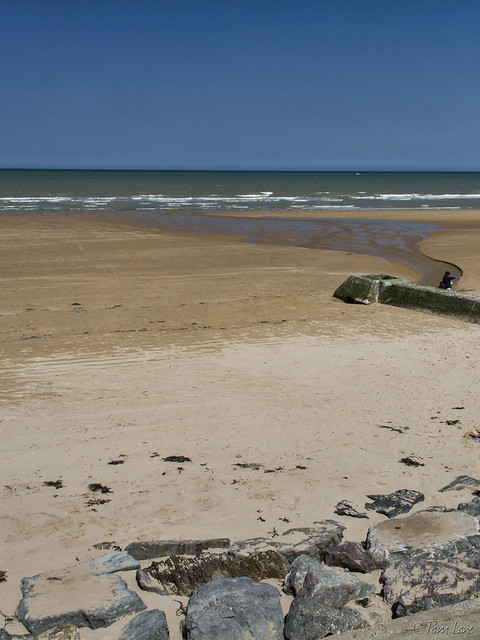
"The battle belonged that morning to the thin, wet line of khaki that dragged itself ashore on the Channel coast of France."
~ General Omar N. Bradley, U. S. First Army Commander
Almost 70 years ago, on June 6, 1944, over 5,000 vessels—the largest invasion force in history—stood out to sea just off the shore of Normandy, awaiting the signal to land in Europe and start the long task of beating back Hitler's army.
 Two American infantry divisions and nine companies of U.S. Army Rangers were tasked with taking the 6-mile stretch of beach code-named Omaha, above. Between them and some semblance of safety lay 200-300 yards of beach that offered no protection from the German snipers.
Two American infantry divisions and nine companies of U.S. Army Rangers were tasked with taking the 6-mile stretch of beach code-named Omaha, above. Between them and some semblance of safety lay 200-300 yards of beach that offered no protection from the German snipers.Very little went according to plan. Landing craft were swamped by the rough seas before they reached the beach. Seasickness was prevalent among the troops waiting offshore. Smoke and mist obscured the landmarks they were to use in guiding themselves in, while a heavy current pushed them continually eastward. The pre-landing bombardment was ineffective, so as the boats approached within a few hundred yards of the shore, they came under increasingly heavy fire from automatic weapons and artillery. (Wikipedia)
American casualties were estimated at 2,400. Many of these are buried at the American Military Cemetery that overlooks Omaha Beach. In the words of Rene Coty, President of the French Republic, "We do not forget, we shall never forget, the infinite debt of gratitude that we owe to those who have given all for our freedom."







No comments:
Post a Comment
Thanks for your comments! Due to the constant spamming, we can no longer accept anonymous comments, but we hope you'll log in and let us know what you think.